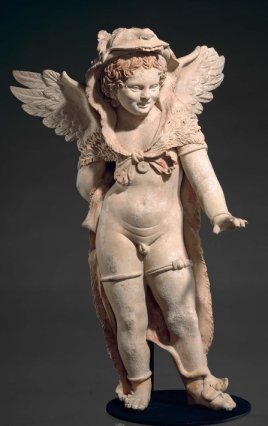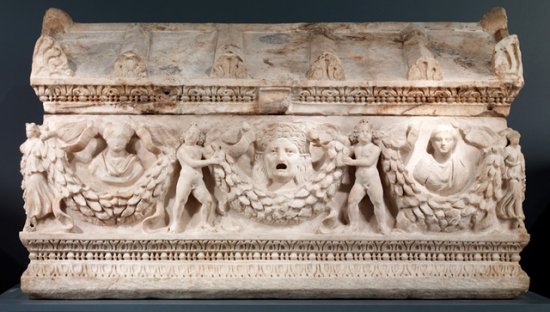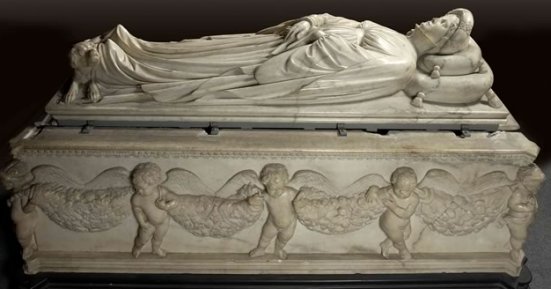|
Child angels - 1 |
|
|
By the sixteenth century, the solemn figures of angels familiar in earlier religious art had often been replaced by naked winged infants. It has to be said that the painting of The Rest on the Flight into Egypt by van Nieulandt (Below left) is the epitome of sentimental kitsch. But what about the painting by Rubens? This very gruesome image shows the torture of St Livinus. His tongue has been torn out, and it is about to be fed to a hungry dog. Above, the plump little infants gaze down on the scene. How on earth can this be appropriate? |
|
 Private collection |
 Musées Royaux des Beaux-Arts, Brussels
|
| These figures go back a long way. Here is the Greek statuette known as the Boston Eros, dating from the first century BC. The association of these figures, and the Roman Cupid, with eroticism has led to considerable confusion. | |
 Museum of Fine Arts, Boston |
|
|
Inventing the Renaissance
Putto by Charles Dempsey sorts out this confusion and provides much
material on how and why their image became an important one in Renaissance
art.The figures are more correctly called Spiritelli. This word
is vernacular Italian, not Latin: the English equivalent might be
sprite. but the meaning of these little figures
stretched back to Roman times. they were seen as personifications
or spirits of abstract ideas and impulses. They could enter the human body and
provoke sensations such as erotic love, fear, love of music, pleasure, charity, and
drunkenness. They also represented the spirits of the dead, which is why
they appear so frequently on Roman sarcophagi. As Dempsey explains, their
reappearance was not due simply to the Renaissance interest in
rediscovered classical art, but it reflected vernacular thinking as well. So, to sort out the name. ‘Eros’, and the Roman Cupid, are the spirits of sexual love; ‘cherub’ is the singular of Cherubim, which, as discussed earlier, are not the same thing at all. ‘Putto’ (plural putti) comes from Latin (and Italian) meaning ‘boy’ which is general enough to do the job. Putti appear as a decorative feature in Early Italian art, as here in the vault of the Upper Church of San Francesco, Assisi, attributed to Cimabue (c 1280). Spiritelli would be a much more descriptive name, but, sadly, no-one uses it. |
|
 |
|
|
This Roman sarcophagus, known as the
Garland sarcophagus, shows those spiratelli, representing the souls of the
dead. Other sarcophagi show spiritelli engaged in Dionysian themes such as
harvesting grapes, representing the pleasures hopefully forthcoming in the
afterlife. |
|
 Walters Art Museum, Baltimore |
|
|
Now compare it with this one. This is the tomb in Lucca of of Ilaria del Carretto, who died in childbirth in 1405 aged 26. The side panel was clearly modelled on Roman sarcophagi, and again represented the spirit of the deceased person; perhaps particularly poignant in view of the circumstances of her death, although she is, in fact, buried elsewhere. |
|
 San Martino, Lucca |
|
|
Interestingly, the word spiritelli is the one regularly used in artists' contracts for works featuring them. |
|
|
On to Page 2 and Donatello |
|
|
Angels page 1 |
|
|
|
|